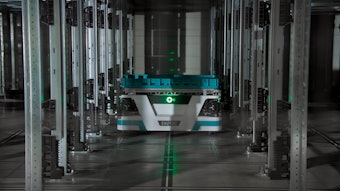
Diesel trucks have powered food and beverage logistics for decades, but it’s no secret that traditional fleets come with many hidden downsides. These include volatile fuel prices and high maintenance expenses that burden business owners while pressure is mounting from customers and partners to cut emissions. As major retailers and distributors prioritize lower-emission logistics, businesses that transition away from diesel fleets can improve efficiency and position themselves as valuable, future-ready partners.
On the other hand, business across the food logistics industry can benefit from scalable, cost-effective electric vehicle (EV) solutions that create long-term cost savings and align with the sustainability goals of the larger corporations they service. EV integration allows businesses of all sizes to respond to the needs of an evolving marketplace influenced by sustainability directives while capitalizing on the operational benefits of a cleaner fleet.
Cold chain joins the EV revolution
Cold chain logistics, or the process of manufacturing and transporting fresh, frozen, and perishable goods, has long been particularly restricted to diesel-powered trucks and energy-intensive refrigeration units. This is because temperature-controlled supply chains are among the hardest to decarbonize due to both the dual power demands of transport and refrigeration, a gap in infrastructure and lack of viable options in the EV space. Additionally, diesel refrigeration units often require separate fuel consumption for the vehicle and refrigeration adding to fuel demand and increasing emissions. New EV solutions offer food service companies, grocery retailers, pharmaceutical companies, and distributors a viable path to reduce emissions without sacrificing reliability.
Key considerations for an EV transition
Building and scaling an electric fleet can present unique challenges to some businesses. While EVs offer long-term cost savings and environmental benefits, businesses must carefully evaluate key factors to maximize their return on investment and ensure a smooth transition.
Range and charging infrastructure
Electric trucks are most often used for last-mile delivery and covering relatively short distances, but completing trips as efficiently as possible still requires proactive planning to provide protection from disruptions. Refrigeration trucks face additional hurdles as the refrigeration technology drains batteries faster. To address this issue, businesses will have to plan charging time into their fleets or reroute their trips to ensure EVs don’t lose power and potentially compromise the quality of goods. This can be accomplished through a mixture of solutions from EV charging trucks, installation of on-site charging infrastructure and partnering with public networks. Charging stations should also be strategically located near critical areas such as warehouse loading docks, fleet maintenance facilities, and delivery hubs to ensure EVs are ready for use during peak operational hours.
Total cost of ownership and ROI
While EVs often come with a higher upfront price tag, their lower maintenance and fueling costs make them more cost-effective over time. Businesses should conduct a full TCO analysis, factoring in long-term fuel savings and available subsidies. This analysis might also consider lifecycle planning. Battery degradation can impact long-term vehicle which creates significant challenges for the resale value of vehicles. For this reason, companies might want to plan for secondary uses of batteries, such as repurposing them for stationary energy storage when it comes time to retire older EVs.
Grid and energy demand
Charging an entire fleet requires significant electricity, which may strain local grids and during peak demand hours significantly increase operational costs. Businesses across the food supply chain should work closely with utility providers to assess grid capacity and negotiate energy rates. Implementing smart charging solutions can help control costs and optimize energy use. Additionally, integrating renewable energy sources into the charging infrastructure can enhance sustainability efforts and reduce costs. Solar panels, for instance, can be installed on warehouse rooftops or parking lots to provide clean energy directly to EV chargers, helping companies meet sustainability goals while also offsetting some energy expenses.
Strategic partnerships
To quickly scale your EV fleet, identifying and engaging strategic partners can be one of the most critical steps to achieving success.
The road ahead
Electrifying a cold chain logistics fleet is complex and success depends on a variety of factors but can be a worthwhile investment for many businesses. Fleets that adopt these solutions will benefit from an increasingly competitive market where lower costs, greater reliability and sustainability are key differentiators for customers and partners across the supply chain. California’s Advanced Clean Trucks (ACT) rule for manufacturers demonstrates that regulators want to see an accelerated shift to zero-emission vehicles and even gives specific guidelines for large fleet operations. The rule quickly inspired other states to adopt the rule including Oregon, New Jersey, Massachusetts, and New York. Though regulatory compliance is voluntary for now, major innovations in fleet electrification are continuing to move forward due to the long-term cost benefits and large corporate sustainability investments already in motion. Investing in low-carbon fleet solutions now helps ensure compliance with evolving policies and shifting consumer and investor preferences while stabilizing costs and mitigating future risks.

























